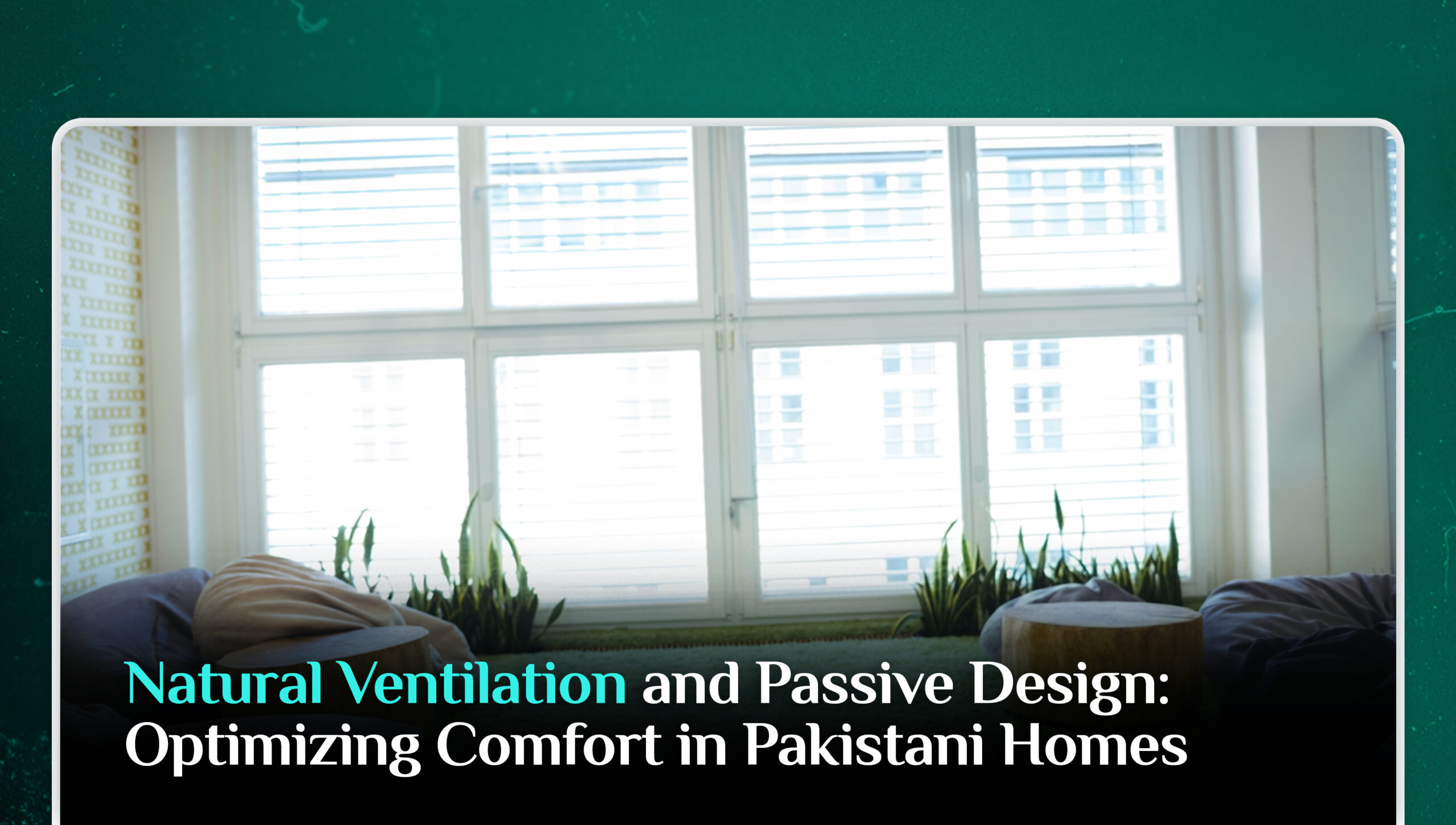Pakistan, characterized by its diverse topography and climates, presents a unique challenge for architects and homeowners seeking to strike a balance between comfort and sustainability in residential design. In this comprehensive exploration, we will delve into the nuanced facets of natural ventilation and passive design principles, discussing their intricate integration to create homes that not only champion energy efficiency but also provide optimal comfort in varying climatic conditions.
Understanding Pakistan’s Climate
Pakistan’s climate is remarkably diverse, ranging from the scorching heat of the plains to the frigid temperatures in the northern mountains. This climatic diversity necessitates a nuanced approach to home design, one that acknowledges the local intricacies. Passive design principles, deeply rooted in understanding these climate nuances, leverage natural elements to minimize reliance on mechanical systems for heating, cooling, and ventilation.
Natural Ventilation Strategies
Courtyards and Wind Towers
Traditional architectural elements, such as courtyards, have been integral to Pakistani homes for centuries. These open spaces serve as natural ventilation corridors, facilitating air movement and providing a private outdoor sanctuary. In arid regions like Thar, wind towers play a pivotal role in capturing and channeling prevailing winds into living spaces, offering a sustainable alternative to conventional mechanical cooling systems.
Cross-Ventilation and Window Placement
Strategic placement of windows and openings on opposite sides of a building is crucial for promoting cross-ventilation. This design approach allows for a continuous flow of fresh air, effectively cooling indoor spaces. Adjustable louvers and operable windows give residents control over airflow, enabling them to adapt to varying weather conditions and ensure a consistently comfortable indoor environment.
Passive Design Strategies in Detail
Orientation and Sun Path Analysis
A detailed analysis of the sun’s path informs the orientation of the building. Minimizing east and west-facing openings reduces exposure to direct sunlight during the intense morning and afternoon hours. This strategic orientation minimizes solar heat gain, especially critical in regions with high temperatures.
Insulation Techniques
In colder regions, such as the northern areas, the integration of advanced insulation materials in walls and roofs becomes essential. These materials help retain internal heat, reducing the need for external heating sources and ensuring a comfortable indoor environment during chilly winter months.
Thermal Mass Utilization
Materials with high thermal mass, such as stone or adobe, play a crucial role in passive design. These materials absorb and store heat during the day, releasing it at night to maintain a stable indoor temperature. This approach is particularly effective in arid regions where temperature fluctuations are common.
Shading Systems
Overhangs, pergolas, and natural shading elements are instrumental in protecting homes from excessive solar heat gain. Adjustable shading systems respond dynamically to changing sunlight angles, optimizing comfort and minimizing the reliance on active cooling systems.
Window and Door Specifications
Investing in energy-efficient windows with low-emissivity coatings and well-sealed doors is fundamental to passive design. These elements prevent heat transfer and drafts, contributing significantly to maintaining a thermally efficient interior environment.
Integration into Pakistani Homes
Courtyard Modernization
Adapting traditional courtyards to modern living involves a thoughtful blend of aesthetics and functionality. Integrating water features, greenery, and efficient ventilation systems enhances the cooling effects of courtyards, making them central to a home’s passive design.
Vertical Gardens and Green Roofs
In urban settings, where space is often at a premium, incorporating vertical gardens and green roofs becomes both a practical and aesthetically pleasing solution. Beyond their visual appeal, these elements contribute to temperature regulation and enhance the overall sustainability of the structure.
Smart Technologies
The integration of smart technologies, such as sensors and automated shading systems, elevates passive design to a new level of efficiency. These technologies enable real-time monitoring and adjustment of environmental conditions, responding dynamically to weather changes and user preferences.
Challenges and Opportunities
Urbanization and Awareness
The accelerated pace of urbanization brings forth challenges in promoting sustainable building practices. Increasing awareness about the benefits of natural ventilation and passive design is imperative. Collaboration among architects, builders, and policymakers can foster the incorporation of these sustainable practices into urban development plans.
Government Initiatives
Government initiatives, such as tax incentives for sustainable construction and the incorporation of passive design principles into building codes, can play a pivotal role in encouraging the widespread adoption of these practices. These initiatives create a conducive environment for builders and homeowners to invest in sustainable and comfortable living spaces.
Conclusion
In conclusion, the fusion of natural ventilation and passive design emerges as the key to crafting homes that seamlessly harmonize with Pakistan’s diverse climate. By amalgamating traditional architectural wisdom, cutting-edge technologies, and sustainable practices, we can create residences that are not only energy-efficient but also resilient in the face of climate challenges. As Pakistan continues to grapple with rapid urbanization and the impacts of climate change, embracing these principles becomes a visionary path toward a sustainable and comfortable future for its homes and inhabitants. Through careful consideration of the local climate and a commitment to sustainable practices, the homes of tomorrow in Pakistan can truly be sanctuaries of comfort and environmental responsibility.
This article is written by Radma Nouman. Radma is a research analyst at the Iqbal Institute of Policy Studies (IIPS).



Leave a Reply